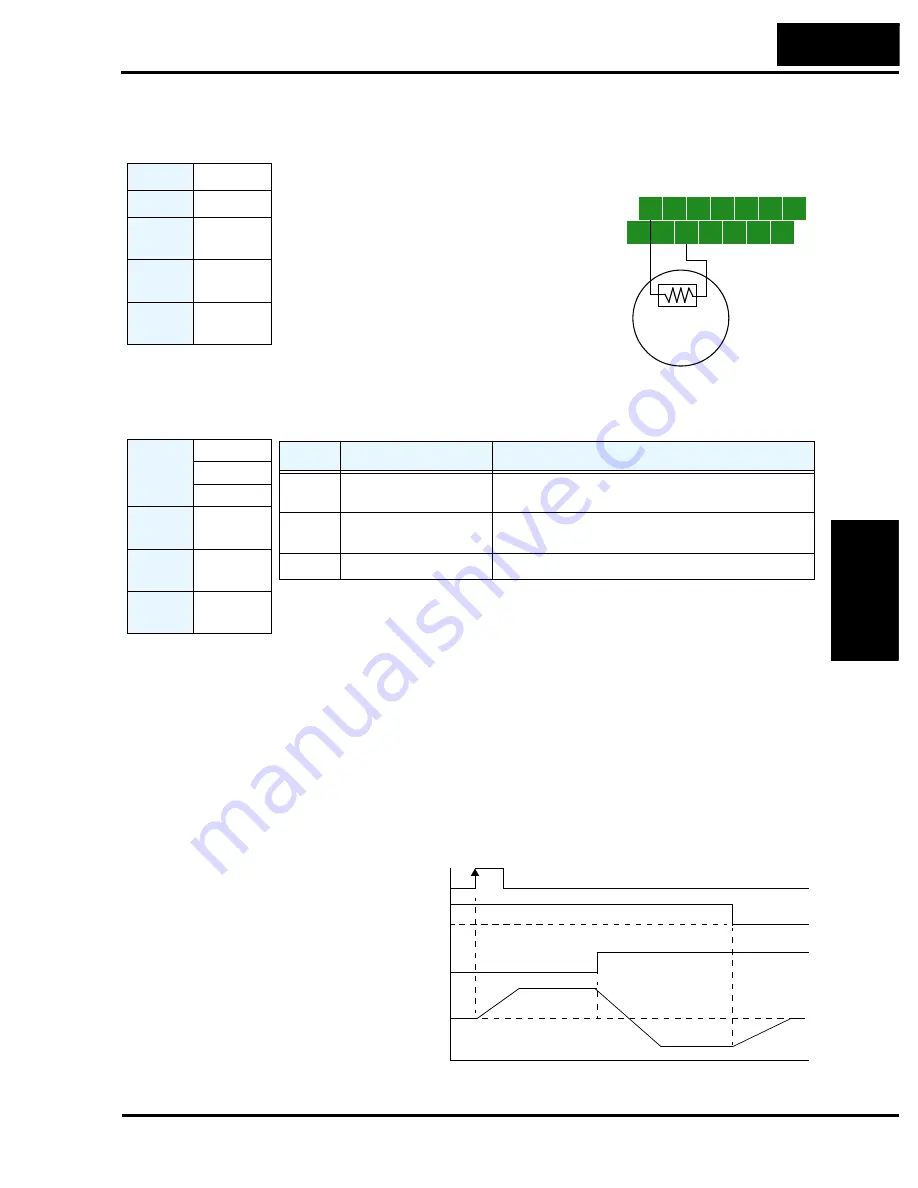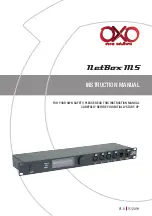
SJ700
2
Inverter
Oper
ati
ons
and Monitor
ing
4–25
Thermistor
Thermal
Protection
Motors that are equipped with a thermistor can be protected from overheating. Input terminal
[TH] is dedicated to sense thermistor resistance. The input can be set up (via B098 and B099)
to accept a wide variety of NTC or PTC type thermistors. Use this function to protect the motor
from overheating.
When a thermistor is connected between terminals [TH]
and [CM1], the inverter checks for over-temperature and
will cause a trip (E35) and turn OFF the output to the
motor. Be sure the thermistor is connected to terminals
[TH] and [CM1]. If the resistance is above or below
(depending on whether NTC or PTC) the threshold the
inverter will trip. When the motor cools down enough, the
thermistor resistance will change enough to permit you to
clear the error. Press the STOP/Reset key to clear the error.
An open circuit in the thermistor causes a trip, and the
inverter turns OFF the motor output.
Three-wire
Interface
Operation
The 3-wire interface is an industry standard motor control interface. This function uses two
inputs for momentary contact start/stop control, and a third for selecting forward or reverse
direction.
To implement the 3-wire interface, assign 20 [STA] (Start), 21 [STP] (Stop), and 22 [F/R]
(Forward/Reverse) to three of the intelligent input terminals. Use momentary contacts for Start
and Stop. Use a selector switch, such as SPST for the Forward/Reverse input. Be sure to set the
operation command selection A002=01 for input terminal control of motor. Note the following:
• If you have a motor control interface that needs logic-level control (rather than momentary
pulse control), use the [FW] and [RV] inputs instead.
• The STP logic is inverted. Normally the switch will be closed, so you open the switch to
stop. In this way, a broken wire causes the motor to stop automatically (safe design).
• When you configure the inverter for 3-wire interface control, the dedicated [FW] terminal is
automatically disabled. The [RV] intelligent terminal assignment is also disabled.
The diagram below shows the use of 3-wire control. STA (Start Motor) is an edge-sensitive
input; an OFF-to-ON transition gives the Start command. The control of direction is level-
sensitive, and the direction may be changed at any time. STP (Stop Motor) is also a level-
sensitive input.
Opt. Code
—
Symbol
[TH]
Valid for
Inputs
[TH only]
Required
Settings
B098, B099,
and C085
Default
terminal
[TH]
5
3
1
7
6
4
2
8
FW
TH
PLC
CM1
P24
CM1
TH
thermistor
Motor
Opt. Code
and
Symbol
20=[STA]
21=[STP]
22=F/R
Valid for
Inputs
[1] to [8]
Required
Settings
A002=01
Default
terminal
Requires
config.
Symbol
Function Name
Description
STA
Start Motor
Start motor rotation on momentary contact (uses accel-
eration profile)
STP
Stop Motor
Stop motor rotation on momentary open (OFF is active
state), (uses deceleration profile)
F/R
Forward/Reverse
ON = Reverse; OFF = Forward
[STA] terminal
[F/R] terminal
[STP] terminal
Motor revolution speed
Forward
Reverse
t
















































